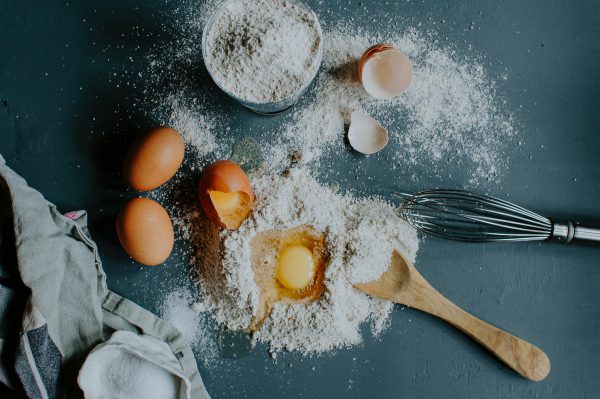Last Updated on April 11, 2023
A Guide to Honey: What it is and How to Use It
A long time ago, one of our ancestors stumbled upon a honeycomb in a tree, fought off the bees courageously, and got hold of the holy golden nectar. Unsurprisingly, our kind has been in love, if not obsessed, with honey ever since.
This gummy combination of nectar, pollen, and bee spit — yes, it contains precious saliva from the bees — has been used in culinary arts as well as medicine almost everywhere in the world. It’s simple comfort food that you slather on toast or spoon down to soothe your sore throat.
Let’s find out more about honey and its story, from how it became a staple in ancient gastronomy to how you can incorporate it into your cooking to add some buzzing sweetness to your dishes.
Sweet Tears of the Gods
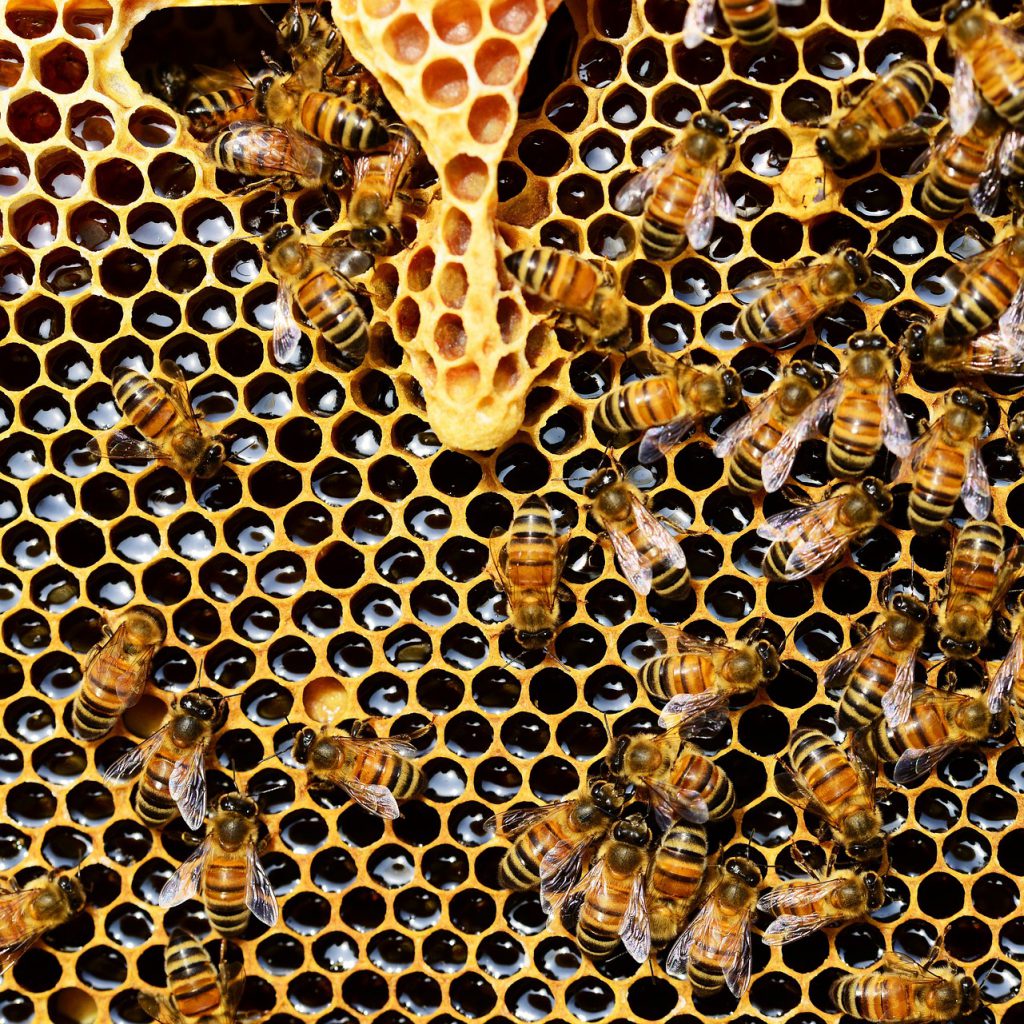
Before processed sugar turned everyone’s heads, honey reigned supreme as the main source of sweetness — not to mention the first guilty pleasure that could get you drunk, but more on that later.
In ancient Egypt, honey used to be appraised for its healing properties. To raise the bet even higher, it was believed that honey bees were actually the tears of the sun god Ra himself — hence the healing powers of honey. It was discovered that it could heal wounds, suppress coughs, and act as an anti-inflammatory, antibacterial, and antioxidant agent.
Apart from the Egyptians, other ancient communities around the world also had a strong bond with honey. For example, an ancient cave painting in Valencia, Spain, dating 10 thousand years, depicts a honey hunter, a person hanging down from a cliff with a rope collecting wild honey from a hive. Back then, it was the only way to satisfy your sweet tooth — can you imagine the extra mile you’d have to walk for that?
Thanks to its high sugar content, honey was easily fermented into an alcoholic beverage known as mead. Or, you could lacto-ferment it, which is how you ferment yogurt, kimchi, or miso. You won’t get any alcohol, so no giggle juice there, but it can increase some of the notes that give honey its unique flavor. If you like the zingy kick of fermented food, make sure to give the fermented honey recipe below a try!
Medicinal Properties of Honey
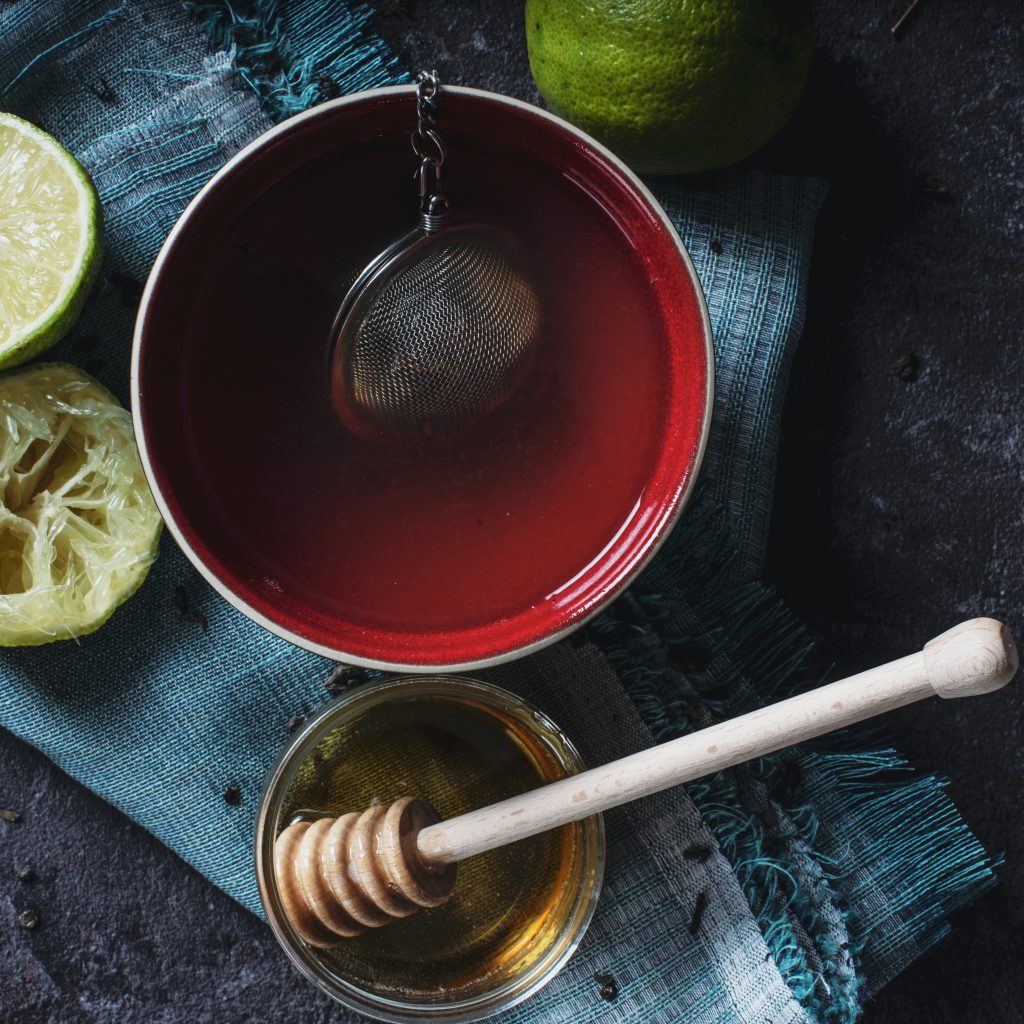
Honey has a very small water ratio, which is why it doesn’t go bad on the shelf and doesn’t ferment unless you dilute it. For the same reason, it can act as an antimicrobial agent when applied to wounds and keeps them nicely moist while protecting them. A lifesaver in times when antibiotics didn’t exist.
Moreover, because it contains bits and pieces of pollen grains that give you seasonal allergies, honey can be used as a natural remedy, as exposing yourself to pollen in small doses would teach your body to accept the phytochemicals. However, there’s no scientific evidence behind it so far.
Types of Honey
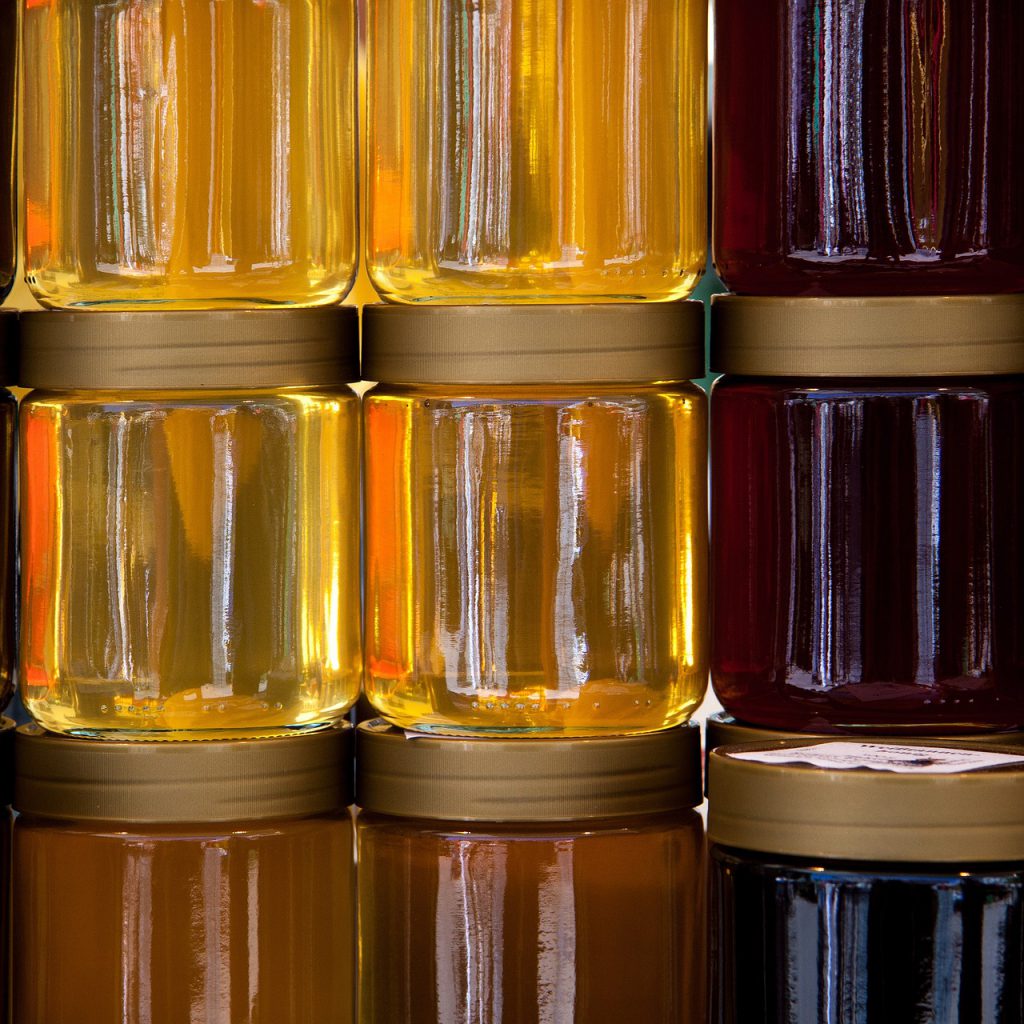
Bees typically gather honey within a range of less than a kilometer. If there’s a good source within that range, they will keep returning. If not, they will collect pollen from whatever source they can find. Unsurprisingly, this affects the taste, color, and texture of the honey.
Honey that comes primarily from a single nectar source is called monofloral or varietal honey. When there are a variety of sources the bees can collect from, it’s called polifloral. Because bees typically travel quite long distances to collect nectar and pollen, it’s very hard to obtain monofloral honey unless the hive is controlled and restricted.
Pasteurized Honey vs. Raw Honey
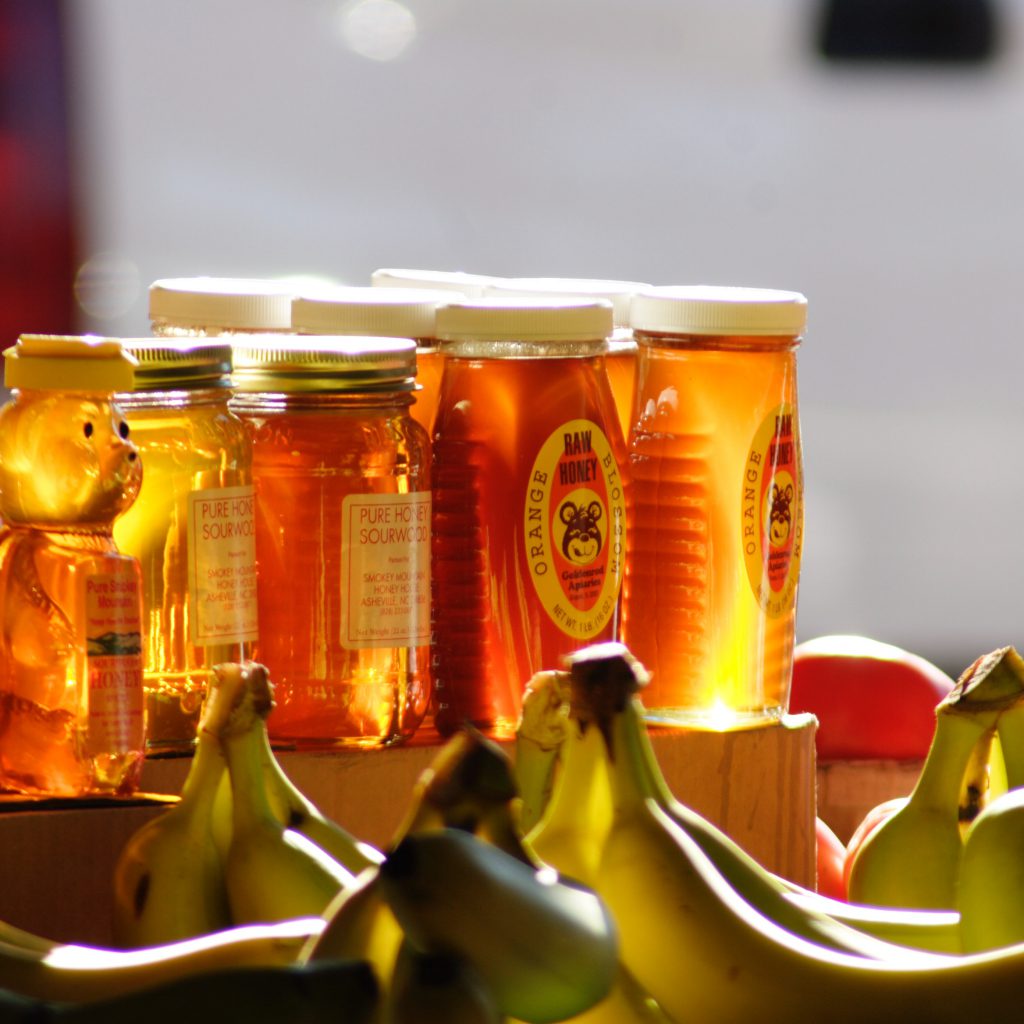
Unlike processed sugar, honey comes in a great diversity of flavors, colors, and textures, depending on the flowers that the pollen and nectar are coming from. You can have clover honey, wildflower honey, buckwheat honey, acacia honey, eucalyptus honey, manuka honey… The list goes on.
But apart from the honey varieties based on the source of pollen, there are 2 main types of honey you can purchase on your trip to the grocery store today: pasteurized and raw.
Raw Honey
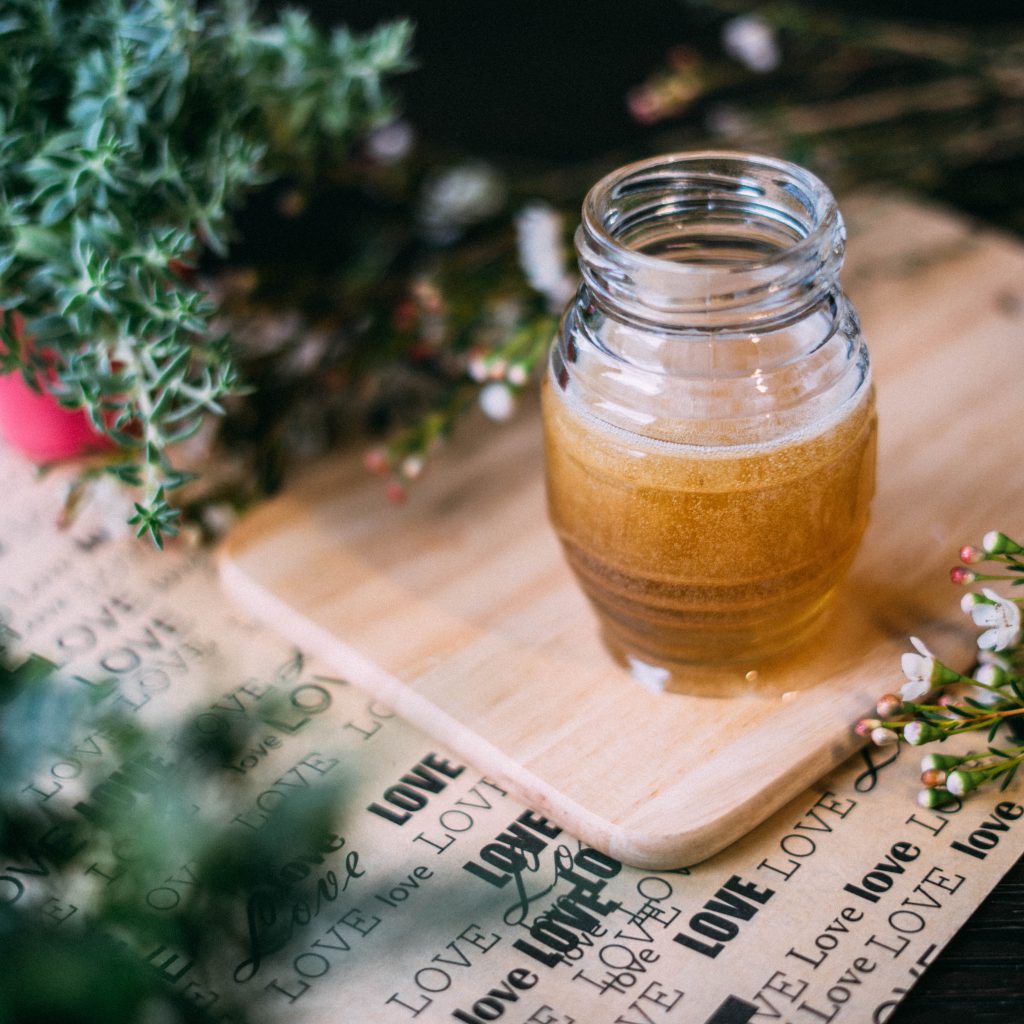
Raw honey is the divine tears of the gods — or the spits of the tears of the gods — coming directly from the honeycomb. It’s filtered by the beekeeper to remove small pieces of debris like beeswax, pollen, or occasional dead bees and comes straight to your home.
Check for “raw” on the label of the honey jar or bottle in the grocery store if you want some unprocessed honey. You are likely to find raw honey at your local farmers market too. It looks cloudier and even opaque for obvious reasons and contains extra elements you can’t regulate.
Raw honey is safe to consume for everyone except for babies. No baby under 12 months old should ever have any honey since they haven’t yet developed the necessary gut bacteria to deal with some of the bacteria unavoidably present in it.
Regular or Pasteurized Honey
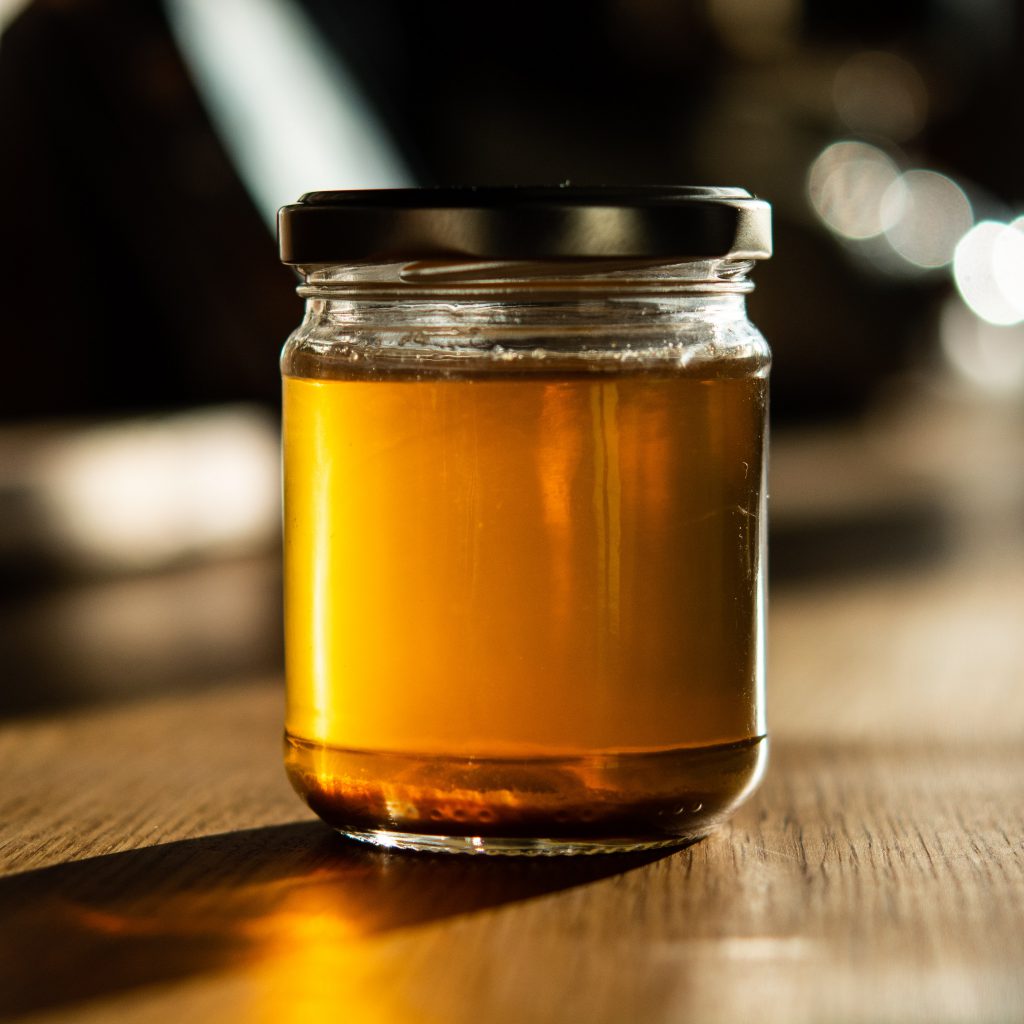
Pasteurized honey is cleared in sight and smoother since the process filters the honey from even the smallest debris that might be present in it, like yeast cells or pollen grains. Like in the case of dairy and other products, pasteurization increases the shelf life of honey or prevents it from crystalizing — since raw honey already has an indefinite shelf life.
Even though there’s a lack of controlled studies in the field, some say that pasteurization removes the beneficial compounds in the honey, like bee propolis and bee pollen, and destroys antioxidants. Others are suspicious of regular honey because it may contain additives and sugar. Now that you know what processes honey goes through before arriving in your kitchen, it’s up to you to decide whether you’ll favor raw over pasteurized honey or not.
Fermented Honey and Mead

by nl.monteiro
Under normal circumstances, honey has a very low ratio of water in it. It means any fermentation bacteria that comes in contact with it dies out of dehydration. But when you increase the water ratio, the natural sugars of the honey make it a pretty good substance to ferment.
Fermented honey — especially with garlic — is thought to have pretty good healing properties. Some folks like to keep it around for the flu season, as it’s thought to boost the immune system. And other folks like to keep it around for some funky, floral kick in their dishes.
It can taste a bit too acidic, as some lactic acid appears during the fermentation, depending on the quality of the honey it’s made of. Even if that’s the case, it can add a surprising tangy kick to your marinades, bread, and stews.
Mead is also a form of fermented honey but in a different way. It was one of the first alcoholic beverages, long before wine and bear, which is why some call it honey wine. It can be sweet or dry and flavored with spices like cinnamon, mace, and herbs like thyme, rosemary, or mint called metheglin. It can also be flavored with fruits and fruit juice (melomel). And if you replace the water with apple cider, you get a beverage called metheglin.
Notice how all these names sound Latin? That’s because the main beekeepers in Medieval Europe were the monks in the monasteries. Probably because beeswax was the ultimate candle-making substance and burned much cleaner, but they also frequently brewed mead.
However, today, commercial mead is not exactly the same. When you get a bottle of mead, you might be getting poor-quality wine that’s been sweetened with honey. But real mead is a beverage worth rediscovering, says Hattie Ellis, the author of the book Spoonfuls of Honey. Luckily, there has been a revival of mead production among high-class honey producers in recent years, so you can put your hands on some real stuff if you’d like to try out this ancient booze.
Should You Cook With Honey?
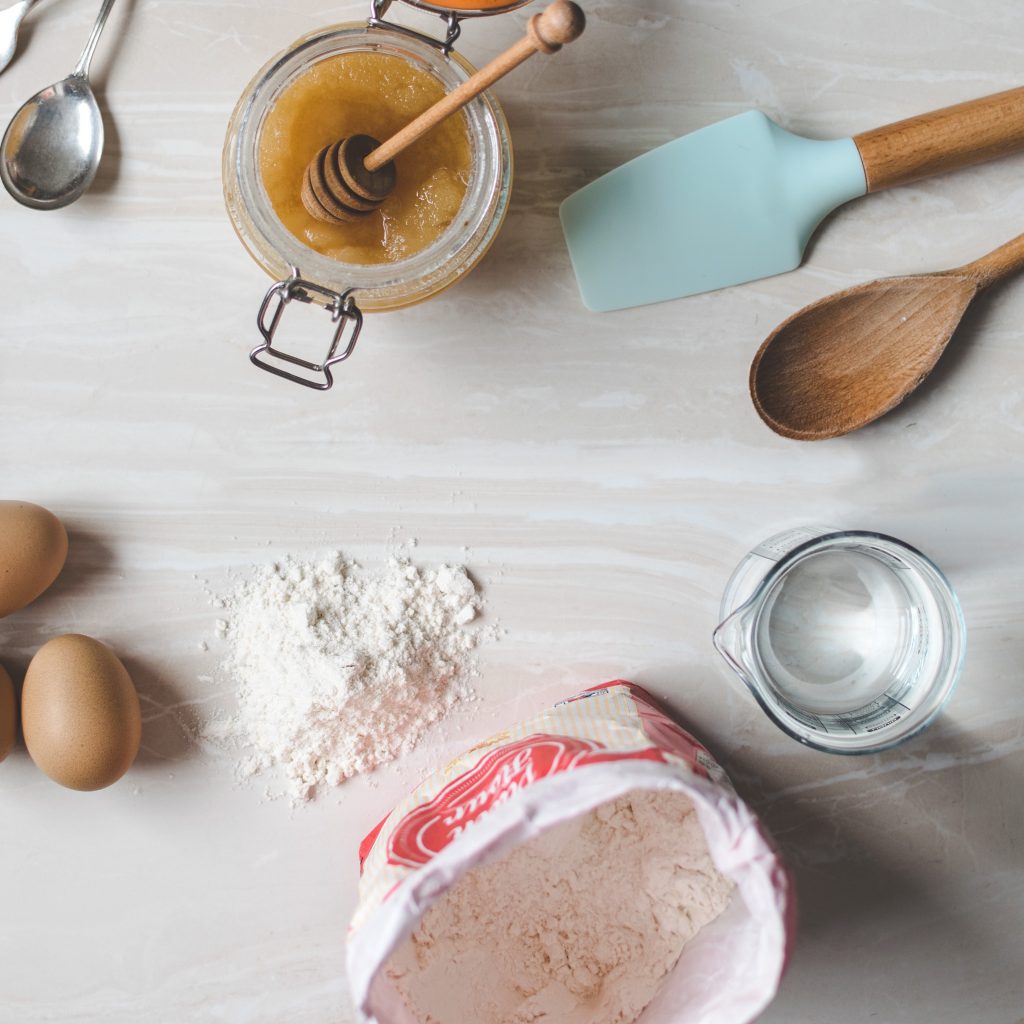
If you do a quick Google search, you’ll see a heated debate going on among home cooks, beekeepers, and well, ordinary people on the internet on whether you should cook with honey or not.
The thing is, cooking honey or heating it might deprive it of some of its subtle flavors and maybe some of its nutritional value, but it does not make it toxic. In fact, if you’ve eaten any normal, mass-produced honey at some point in your life, you have had cooked honey because pasteurization equals heat.
The misconception of honey turning into a toxic substance when heated is failing to stand in the face of modern science today.
Recipes With Honey for a Sweet Upgrade
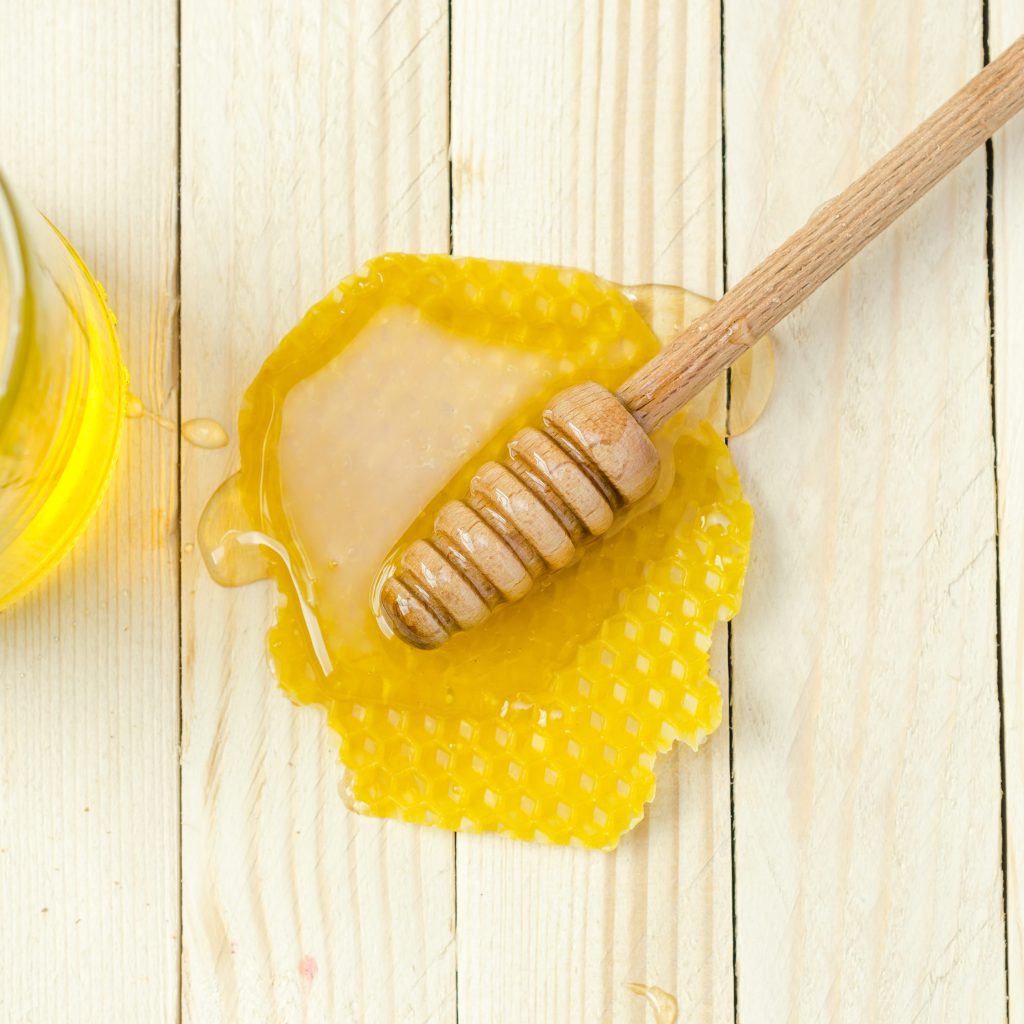
Now that you know the difference between raw and pasteurized honey, and the fact that cooking it won’t turn it into a toxin, let’s talk about how you can incorporate this nectar into your meals to add some sweet flowery kick to your dishes.
Honey is one of the most versatile jars in your pantry. You can simply mix it with peanut butter and spread it on toast. But honey can offer so much more than just sweeten your breakfast.
Try adding honey to smoothies and oatmeals for a sweet kick, mixing it into your sweet chili sauce to calm the fire, putting some on your vegetable stir fries for a golden gloss, and drizzling it over your fruit salad for the ultimate fresh and floral combo. Here are 6 recipes to try out with honey.
1. Spicy Honey-Lime Chicken Marinade

Sweet, spicy, and hot. Adjust the amount of heat in it, sweltering or just a little kick, and turn your grilled chicken into a flavorful, saucy, and tender dish. Works with all parts of a chicken – thighs, legs, wings, or breasts, and any type of cooker – oven, grill, cast iron skillet, cooking bag, or skewers.
Prep time: 50 mins
Yield: 4 people
Ingredients:
- 1 kg boneless, skinless chicken thighs or breasts
- ½ cup honey
- ¼ cup low-sodium soy sauce
- 1 tbsp olive oil
- Juice of 1 lime
- 2 tsp lime zest
- 3 cloves of garlic
- 1 tbsp grated fresh ginger
- 1 tbsp sriracha
- A pinch of cornstarch
- Salt to taste
- 2 tablespoons chopped cilantro or parsley to garnish
Preparation:
- Get a big mixing bowl and whisk the soy sauce, honey, lime zest, lime juice, minced garlic, grated ginger, and olive oil in it. Add salt to taste and a pinch of cornstarch to thicken according to your taste. This will be your marinade sauce.
Tip: 1 tablespoon sriracha will result in a moderately spicy dish. You can adjust the amount of heat by adding more sriracha according to your taste.
- Cut the pieces of chicken meat into the size you want, small if you’re putting them on skewers or bigger for the grill. Place the chicken into a bowl or a zipper bag. Pour half of the marinade sauce over the chicken pieces and let it marinate for about 30 minutes at room temperature. Transfer the bowl to the fridge and let it marinate for at least 6 hours, or better, overnight.
- Pat dry the marinated chicken pieces for better searing.
- Put some cooking oil on the grill or cast iron skillet. Grill the marinated chicken on all sides for about 10 minutes, until they turn golden, saucing them up with honey-lime glaze a few times before taking it off the heat.
- Let the chicken pieces rest for about 5 minutes. Drizzle them with the leftover honey lime glaze (if you have any left), sprinkle it with chopped cilantro or parsley, and serve while it’s still hot.
2. Caramelized Honey Roasted Root Vegetables
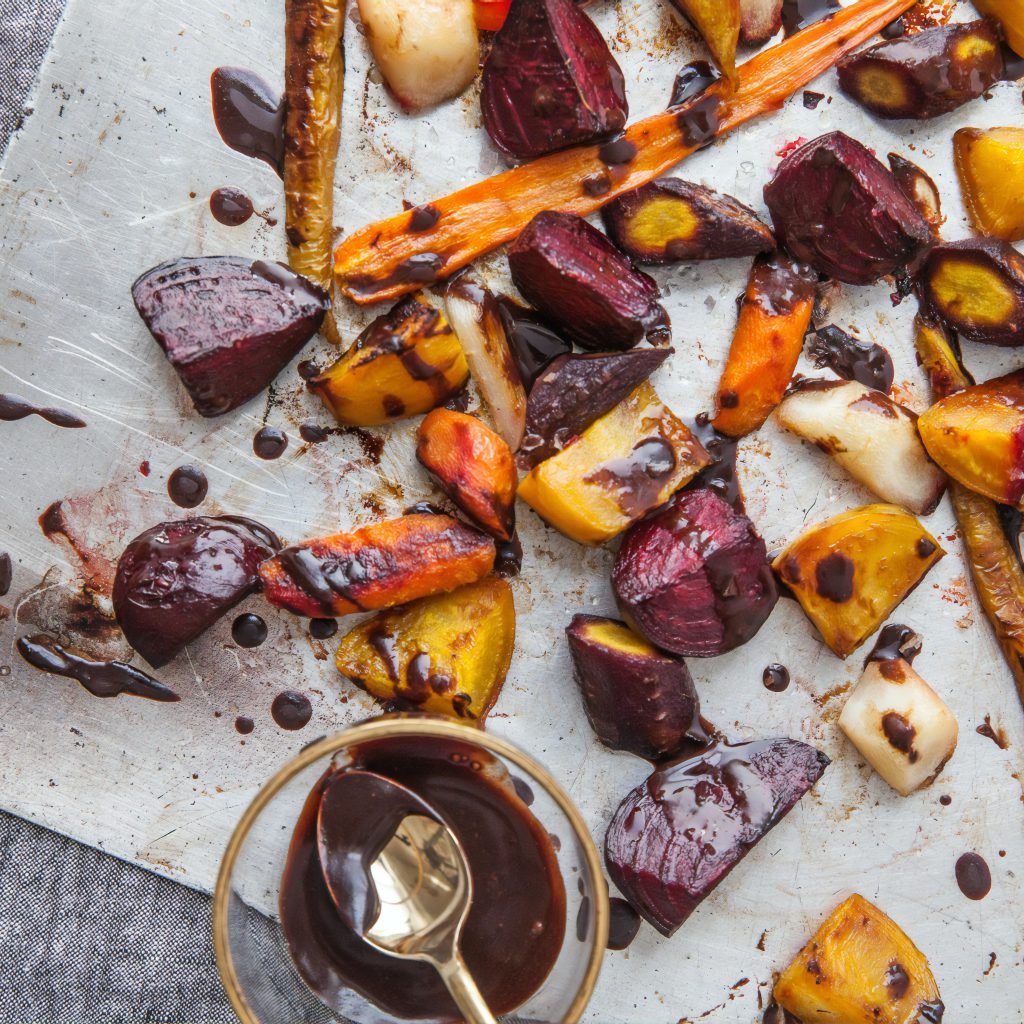
Sticky roasted root vegetables in mustard and sweet honey glaze. It’s a pretty simple dish, but it can be the ultimate example of how delectable simple cooking can be. Serve these healthy veggies as a side dish or main course. They make up great leftovers too.
Prep time: 75 mins
Yield: 6 – 8 people
Ingredients:
- 2 tbsp olive oil
- 1 tbsp butter
- 2 tbsp regular honey
- 2 tbsp dijon mustard
- 250 gr parsnips
- 250 gr baby carrots (green tops intact)
- 250 gr sweet potatoes
- 250 gr beet
- 5 cloves of garlic
- A handful of thyme springs
- Salt and pepper to taste
Preparation:
- Preheat the oven to 220 C. Place a large roasting tray sheeted with baking paper in the oven
- Chop the parsnips into quarters and half the baby carrots in longitudes. Cut the other vegetables into similar sizes.
- Toss the chopped vegetables in a big mixing bowl with oil — you can add seasonings to your pleasure or your favorite spice mix.
- Arrange the vegetables in the roasting tray and let them roast in the oven for about 20 minutes.
- Melt the butter, stir in the honey, mustard, and thyme leaves, and pour the mixture over the vegetables. Roast for 20 more minutes until all vegetables are sticky and golden.
- Sprinkle some more fresh thyme leaves and serve while still hot.
3. Roasted Nut Bites
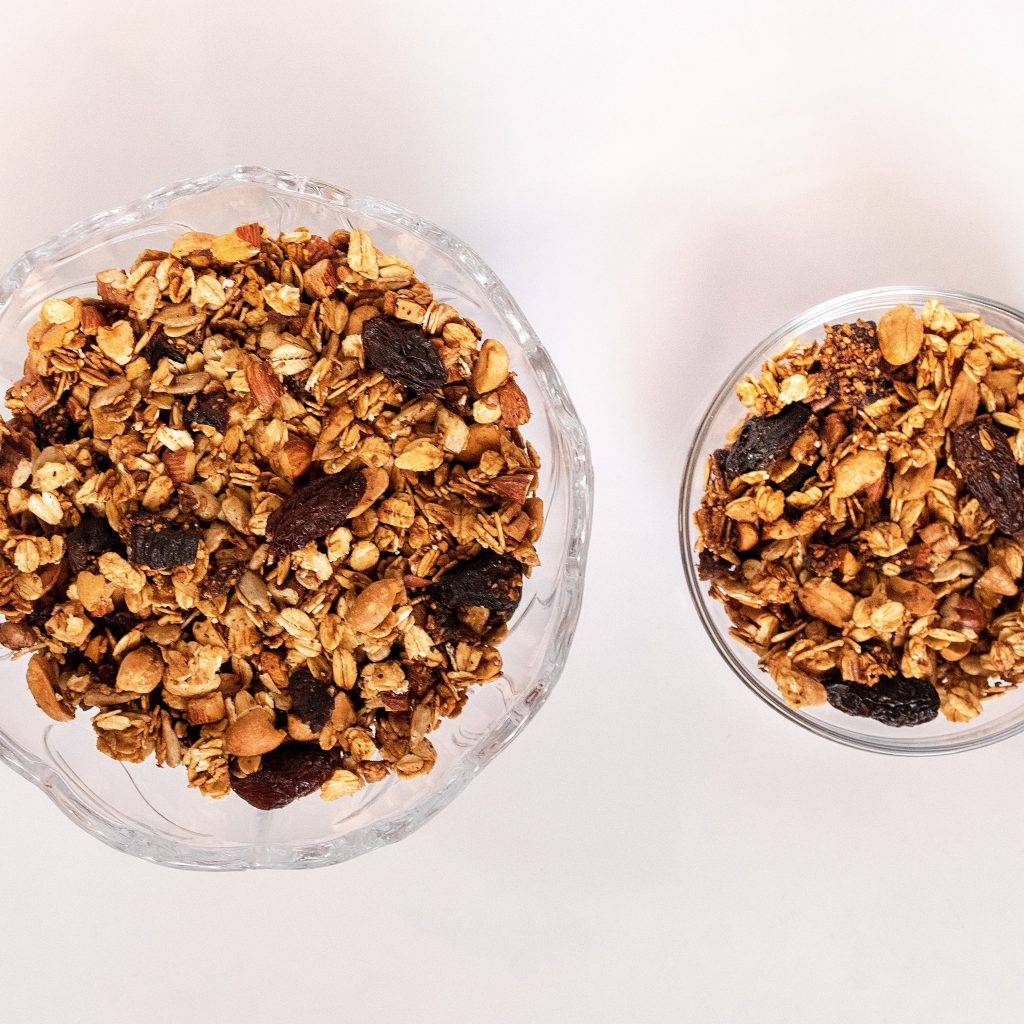
Savory, spicy, and sweet, you need only a handful of simple pantry ingredients and 10 minutes to prepare these nut bites. It can be your next favorite party snack or an appetizer to spoil your loved ones with. No forks or spoons required.
Prep time: 10 mins
Yield: 4 people
Ingredients:
- 3 cups of assorted unsalted, raw nuts are in your pantry (walnuts, cashews, almonds, peanuts, pecans, hazelnuts…)
- 2 tbsp unsalted butter
- 2 tbsp honey
- 2 tablespoons finely chopped fresh rosemary
- ¼ tsp of cayenne pepper
- 1 tsp cumin
- 1 tbsp light brown sugar
- 2 tsp salt
- ¼ black freshly ground black pepper
Preparation:
- Preheat the oven to 175 C. Line a baking tray with a baking sheet.
- Add the nuts into a medium mixing bowl and add brown sugar, cayenne pepper, cumin, salt, and black pepper.
Tip: Grinding the spices yourself when you need them enhances the aroma. Use a granite mortar and pestle or a spice grinder to grind cumin and black pepper on the spot.
- Melt the butter, add some fresh rosemary in it, and let it infuse for a few minutes. Then add honey.
- Pour the butter mixture over the nuts and toss a few times until all of the nuts are evenly coated.
- Spread the nuts on a baking tray lined with a baking sheet.
- Bake in the oven at 175 C for 10 minutes. Remove the tray and stir the nuts once for even cooking and bake for 5 to 10 more minutes or until the nuts are golden fragrant.
- Take the tray out of the oven and let it rest for at least 15 minutes before you serve the nuts.
Tip: Allowing the nuts to soak up the flavors is a good idea. In other words, they get better with time. Let them rest longer if you have time, but keep in mind that roasted nuts spoil much faster than raw nuts, so store them in an airtight container in the fridge for 2 weeks, or freeze them for future use.
4. Tangy and Sweet Salad Dressing
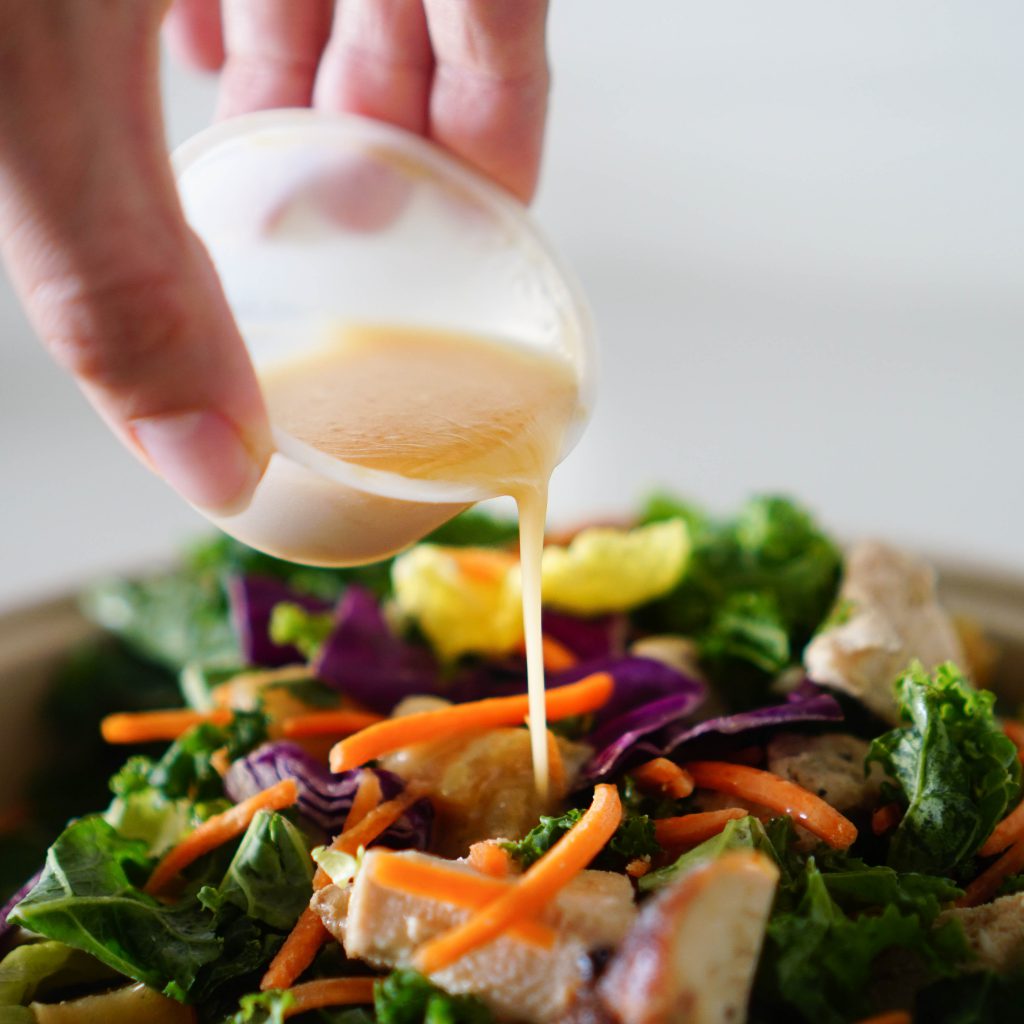
Prepare to meet your new go-to salad dressing. This tangy and sweet honey mustard vinaigrette with simple ingredients comes together in a snap and is capable of turning your salads into crowd-pleasers.
Prep time: 5 mins
Yield: 4 people
Ingredients:
- ½ half cup extra virgin olive oil or other aromatic cooking oil
- ¼ cup white vinegar
- ½ cup honey
- 2 tbsp dijon mustard
- A pinch of finely ground black pepper
- 1 tsp salt
Preparation:
- Add olive oil, honey, white vinegar, mustard, salt, and pepper into a mason jar or a container with a lid. Shake well, or whisk.
- Pour it over your salad before serving it.
Tip: You can refrigerate the dressing if you’re not using it right away for up to a week.
5. Matcha Tea Honey Frozen Yogurt
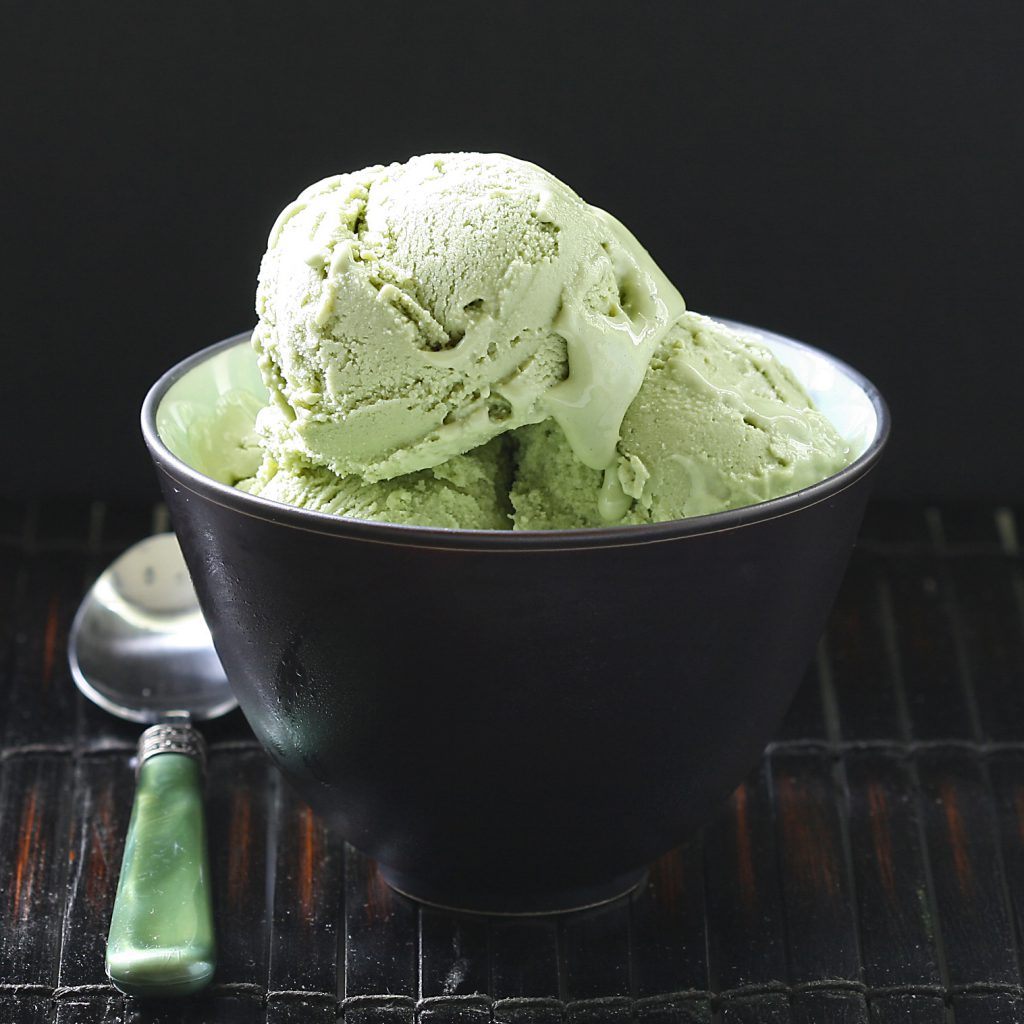
By Susan Filson
Matcha is packed with antioxidants that offer numerous health benefits. Combine that with some honey and greek yogurt, and viola! You have a delicious healthy dessert!
Prep time: 1 hour
Yield: 8 servings
Ingredients:
- 1 cup Greek yogurt
- 3 cups whole milk
- 1 tsp vanilla extract
- ¾ cup sugar
- 4 teaspoons matcha green tea powder
- 2 tablespoons vanilla vodka (optional)
Preparation:
- Combine all the ingredients in a large mixing bowl and whisk until everything is mixed together. It takes a few minutes for the yogurt to infuse with the other ingredients, so you can also use a hand mixer.
- Let the mixture chill in the refrigerator for 1 hour.
- Process it through your ice cream maker if you have one. If you don’t, move to the next steps.
- Transfer the mixture to a dish, spread it out evenly, flatten, and place in the freezer for 45 minutes. Remove it from the freezer and stir it with a rubber spatula. Don’t forget to incorporate the already frozen sides. Flatten it back and put it back in the freezer for 2 more hours, stirring every 30 minutes.
- Store the frozen yogurt in the freezer for up to a month — but keep in mind that it will lose its creaminess over time.
6. Fermented Garlic Honey
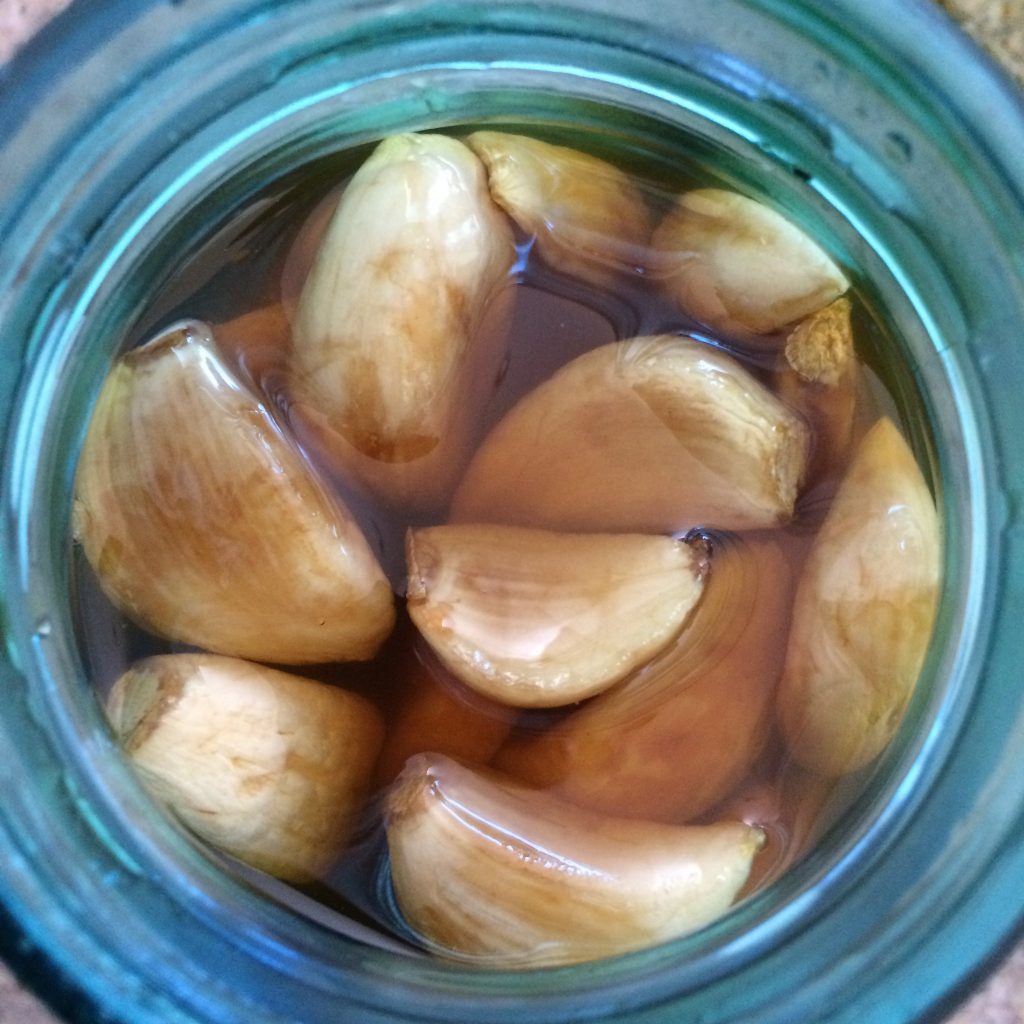
By htomren
It may sound odd, but honey ferments are the easiest fermentation recipes you can try at home — it hardly needs a recipe. Contrary to its soft and creamy appearance, fermented garlic honey has quite a sharp taste and can be used to add a funky kick to certain dishes and drinks. It goes great with smoothies and lemonades or added in muesli with greek yogurt in the morning.
You can also brush it over a piece of bread to make honey-garlic bread, bake it in sourdough bread, or drizzle it on freshly roasted fish. In other words, you can substitute fermented garlic honey whenever you’d use garlic and would want some extra funky sweetness. And it virtually never goes bad. A great condiment to have in your pantry!
Prep time: 20 mins + a month to ferment
Yield: 2 cups
Ingredients:
- 2 heads of garlic
- 1 cup raw honey
Preparation:
- Peel the garlic cloves. You can either ferment them whole or crush them for a homogenous fermented garlic honey paste.
- Place the garlic cloves in a mason jar and pour over 1 cup of raw honey on top of it. You need some empty space below the rim as honey expands during fermentation.
- Open the jar every other day to let the accumulated carbon dioxide out.
- Garlic cloves may float in the honey. Rotate the jar to cover them with honey every time you ventilate the jar.
- When ready, the garlic will be fully softened, the honey will get a darker shade, and the mixture will thicken. When that happens, in a month or so, you can start using your fermented garlic honey. Store in a dark place at room temperature.
Before You Go: How to Give Back to Honey Bees?
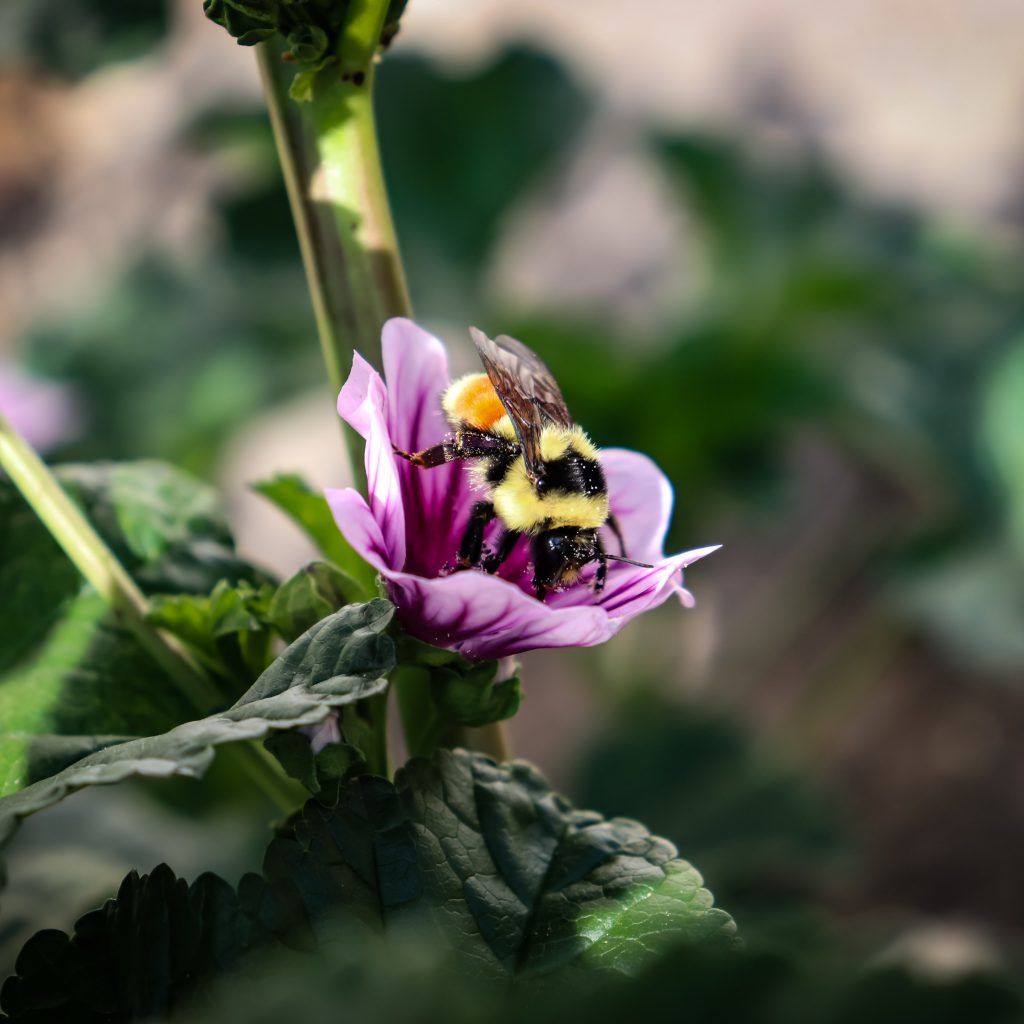
In the process of making honey, bees hold a crucial link in the circle of life by assisting plants in reproducing through pollination. However, climate change is already affecting the honey bee populations around the world. Although we might not be able to halt climate change on our own, there are a few things we could do to return the favor to the bees.
Plant a Bee Garden
Planting a bee garden with plants that bees like is the simplest thing you can do. Some of these plants are bee balm, fox gloves, lavender, hollyhocks, and geums, but quick research can reveal the species that grow in your region. You can also plant some edible flowers among them and enjoy coloring up your dishes while you’re at it.
Plant a Tree
When a grown tree blossoms, it offers thousands of flowers to the bees. It’s a feast! They can also provide nesting for the bees, as well as other members of the ecosystem. By planting trees that blossom in different seasons, you can do the honey bees in your area a huge favor.
Go Chemical Free
If you have a garden, know that the synthetic fertilizers, pesticides, and herbicides aren’t only affecting your plants but the whole ecosystem in the garden, from insects in the soil to fungi and bees. Switching to natural solutions and organic products to keep your garden in mint condition will give you a healthier garden overall.
Support Local Beekeepers
The ones that probably work the hardest for the bees are the small-scale beekeepers in your community. You can show your appreciation by simply buying locally-made honey and other products made of beeswax, such as lotions, soaps, or candles.






